Tom's Guide Verdict
With its strong integration with Google Assistant, the Lenovo Smart Display is a better realization than the Amazon Echo Show of what a smart display should be.
Pros
- +
Bright, colorful display
- +
Good audio quality
- +
Excellent touch-screen interface
- +
Strong integration with Google Assistant
- +
Plays YouTube videos
Cons
- -
Large
- -
Can't control Ring smart home products
- -
Need to download Google Duo app to receive video calls on phone
Why you can trust Tom's Guide
By their nature, voice assistants are nonvisual, so what happens when you add a screen to the mix?
It's worked pretty well on the Amazon Echo Show, but after that device's initial release a year ago, neither Amazon nor other best smart speakers have done much to improve the experience. Maybe Lenovo's Smart Display ($249) will shake them out of their complacency.
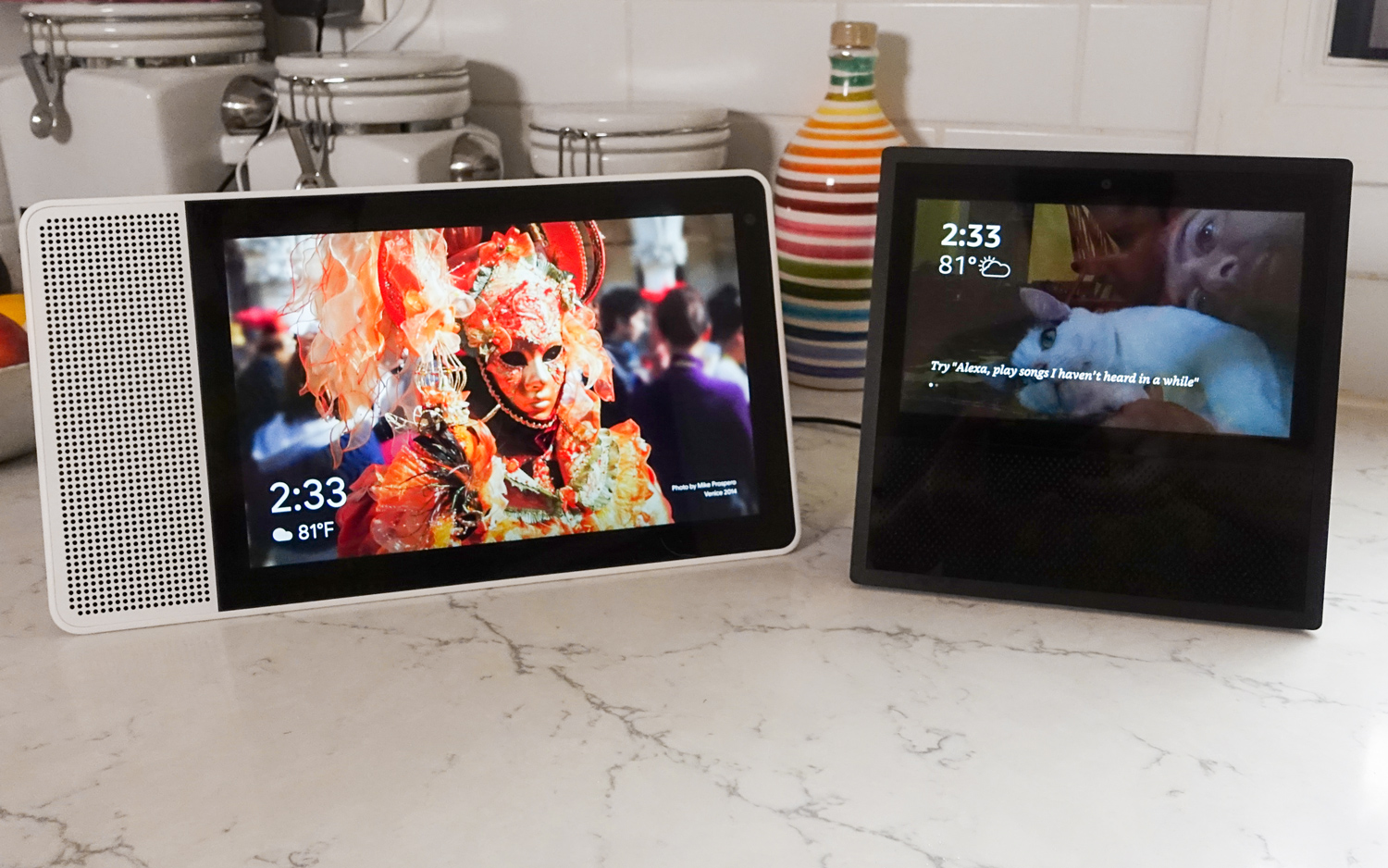
The first of what are sure to be many devices with both a display and Google Assistant, the Smart Display does a much better job of enriching Google's voice assistant through more thought-out on-screen interactions than does the Echo Show with Alexa. And it does so on a device that's much more eye-catching, too.
Update (Nov. 7, 2018): Several Google Home Hub features are being rolled out to the Lenovo Smart Display: Multi-room audio, the ability to view video from the Nest Hello Doorbell, as well as viewing Live Albums from Google Photos will soon be available on the Smart Display.
Design: Daring to be different
Where the Amazon Echo Show is functional to the point of boring, the Lenovo Smart Display's design takes a few more chances. A large screen dominates the front, with a speaker grille to the left — I'm not sure I like this choice — while the rear expands into a triangular shape on one end. It's interesting to look at, not that I make a habit of looking at the backside of my gadgets.
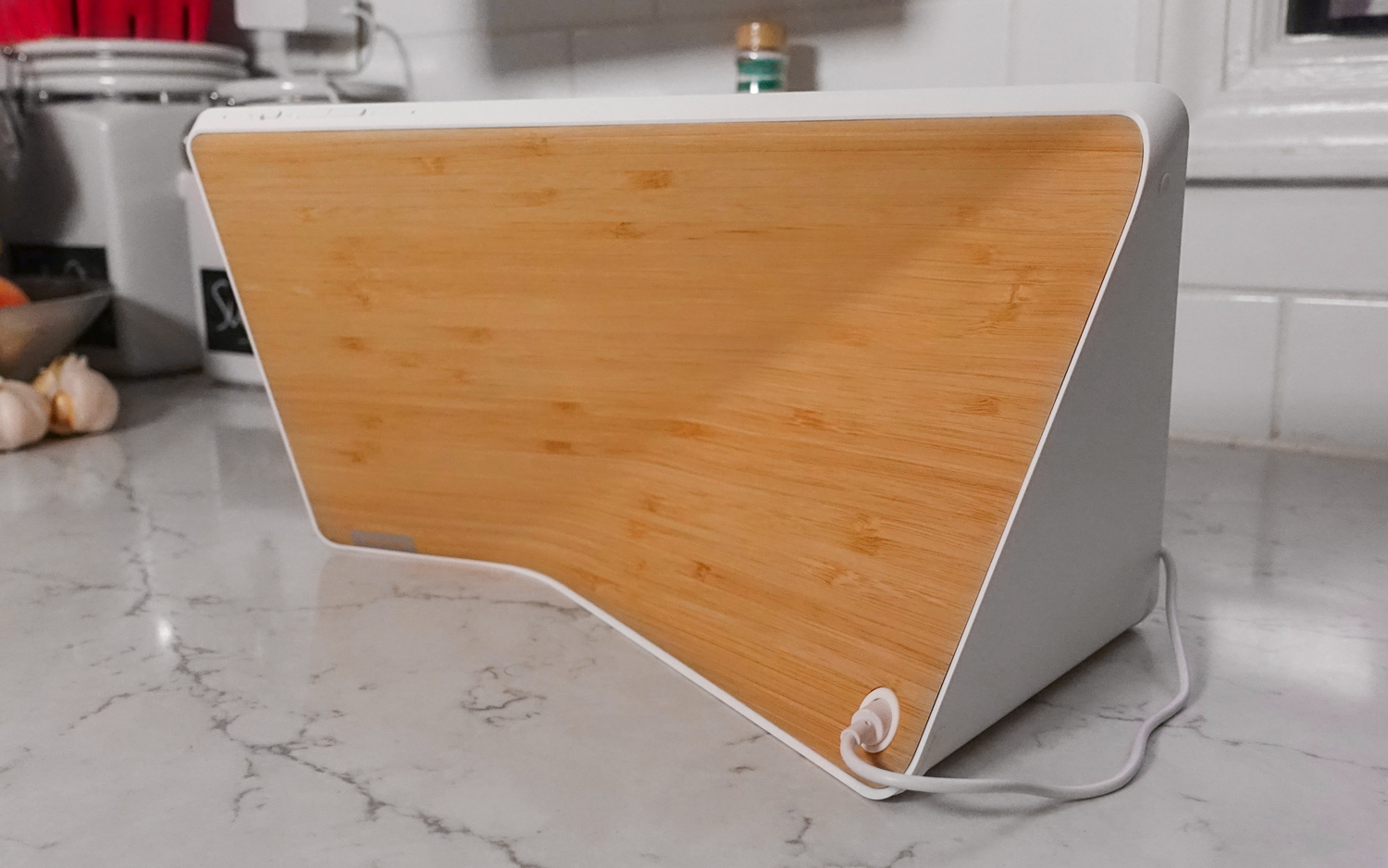
I definitely like the bamboo paneling, and I wish more device makers would incorporate wood into their designs. It's just too bad that the bamboo comes with only the 10-inch model. (The 8-inch version comes with a gray, soft-touch back.)
The Smart Display has a triangular rear so that you can stand the display in either landscape or portrait mode. However, the latter mode works only when you're using the Smart Display to make video calls, which seems a waste. Along the top edge of the device are volume controls and a button to turn off the microphone. A slider on the right edge blocks the Smart Display's 5-MP camera. (There's no such feature on the Echo Show.)
MORE: See our Lenovo Smart Frame review
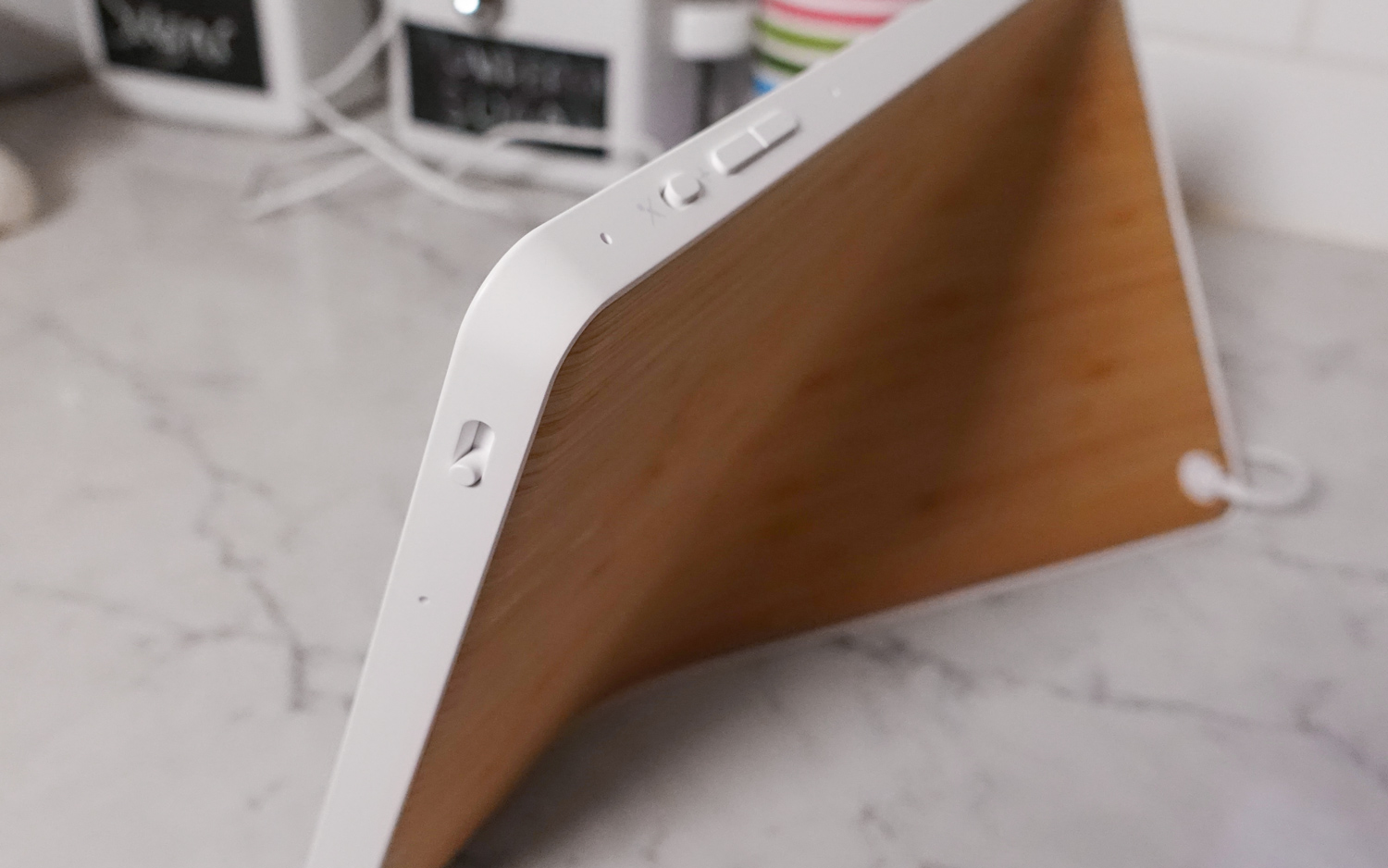
The large size of the Smart Display is both good and bad. First, the good: Its 10-inch display is much sharper and more functional than the 7-inch display on the Echo Show. And now, the bad: Because it has to fit a 10-inch display, the 12.3 x 6.8 x 5.3-inch Smart Display is much larger than the 7.4 x 7.4 x 3.5-inch Echo Show and will completely take over your nightstand.
MORE: 7 Ways Lenovo's Smart Display Beats Echo Show
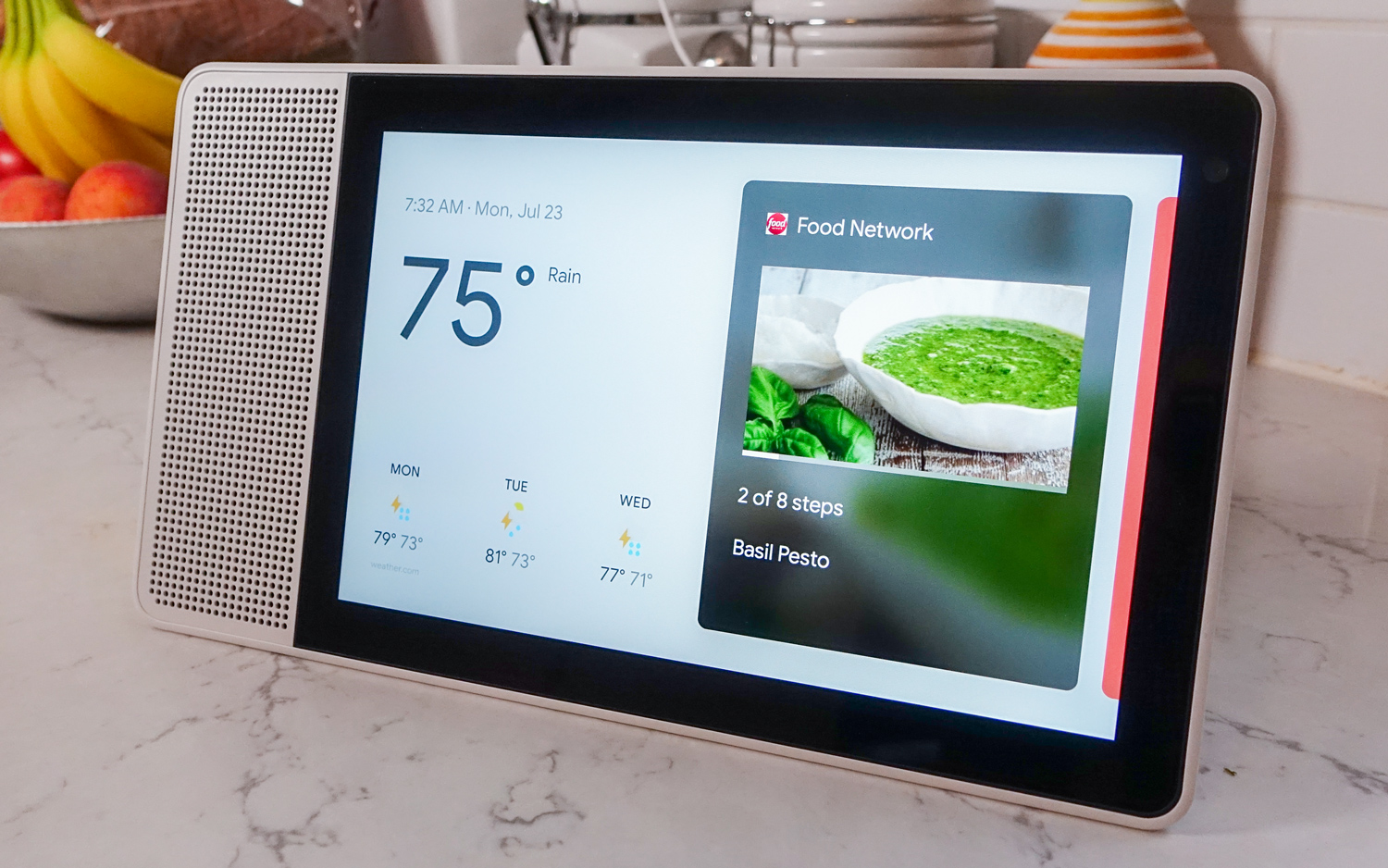
On mine, at least, the device left little room for my phone or other items, such as a book or a cup of tea, and I'm not sure I want to a display this large sitting so close to my head.
I definitely like the bamboo paneling. It's just too bad that it comes with only the 10-inch model.
At 10.4 x 5.6 x 4.4 inches, the 8-inch Smart Display is definitely smaller than the 10-inch model, but it's not a huge difference. Yes, there was more room on my nightstand, but it still took up more space than I would have liked. If Lenovo had put the speakers beneath the display, as Amazon did with the Show, it would have made for a smaller footprint.
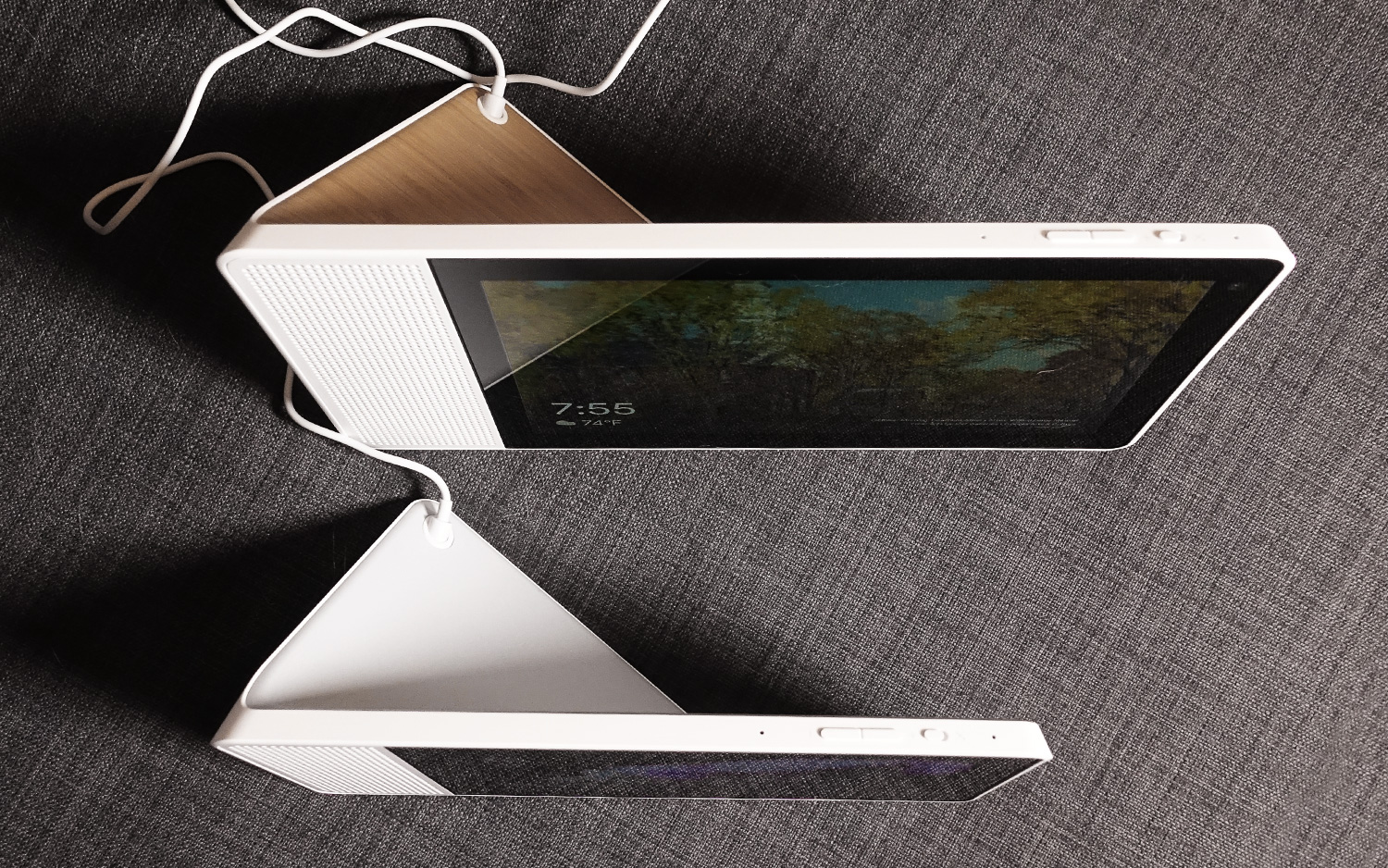
The gray, soft-touch back of the 8-inch model is nice, but it's definitely not as aesthetically pleasing as the bamboo back of the 10-inch version.
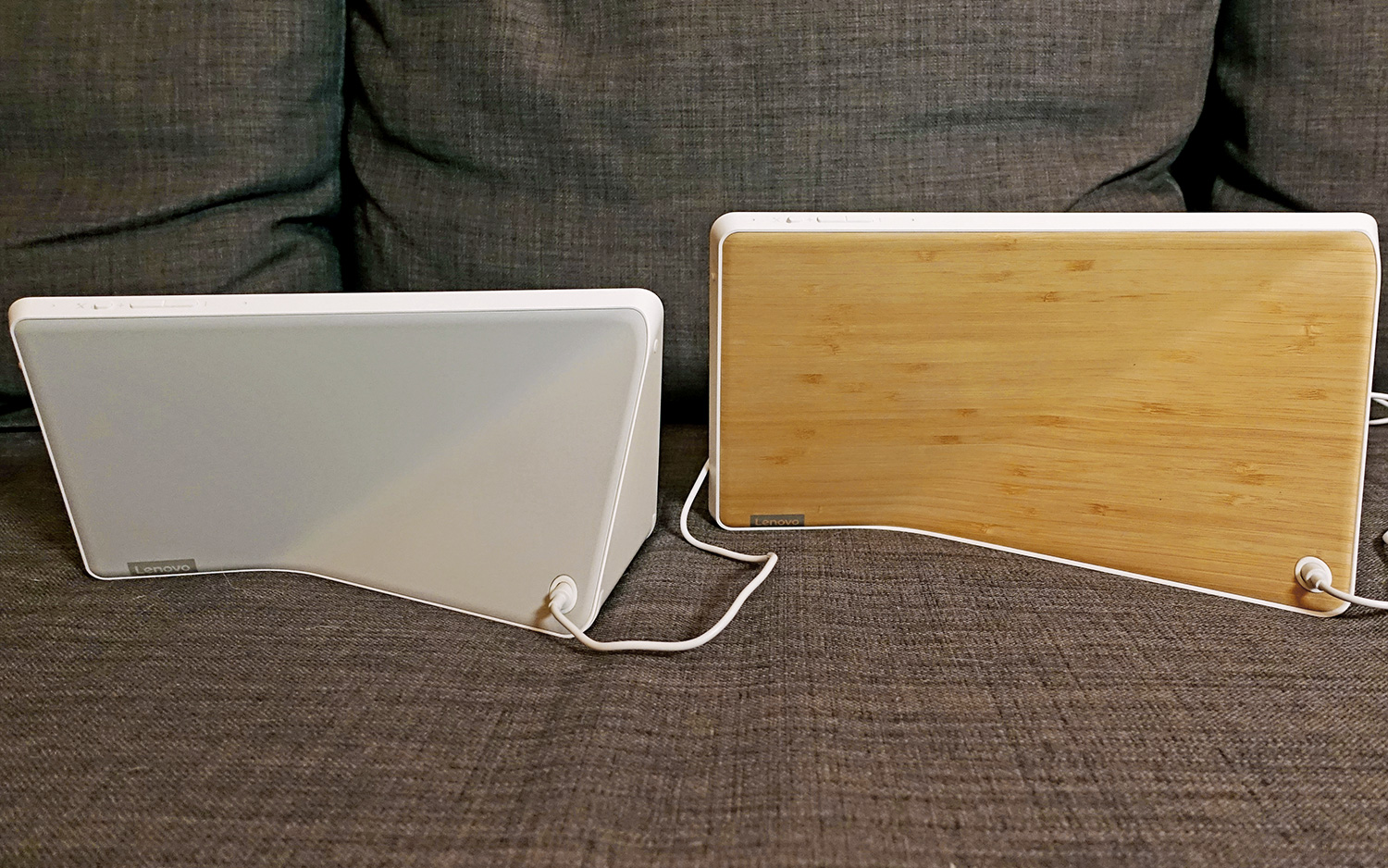
Interface: Now this is smarter
While one of the main points of a voice assistant is that you can perform tasks just by talking to it, the touch screen on the Smart Display is put to much better use than the one on the Echo Show. This is apparent right from the Home screen on Lenovo's device, where you can swipe to reveal cards for the weather, your calendar, recently performed actions and more. Helpfully, a screen even suggests other things you can do.
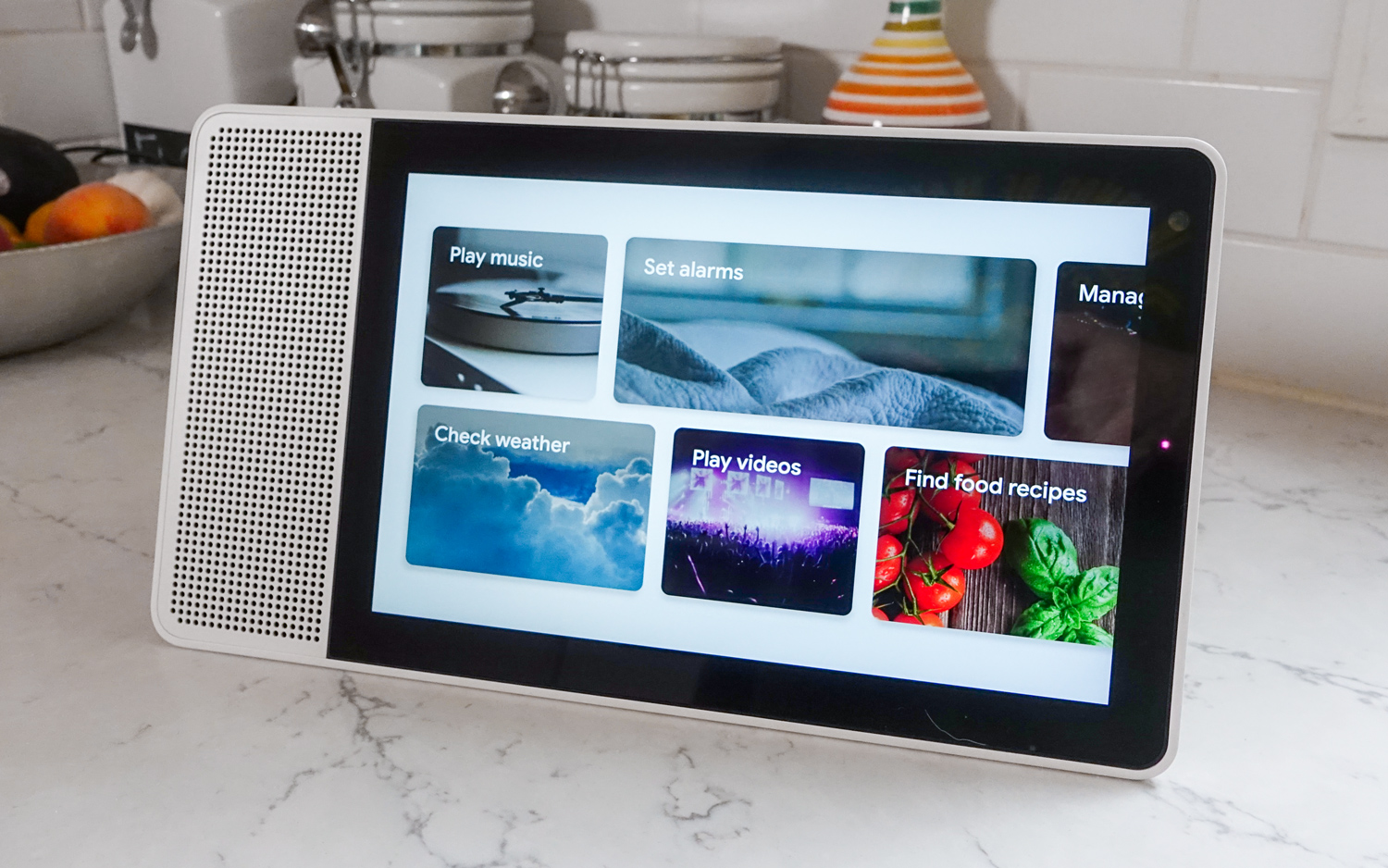
As the Echo Show does, the Lenovo Smart Display lets you control smart home devices by voice, such as changing the temperature on your thermostat or turning on your lights. However, Google Assistant takes it one step further than Alexa; after you issue your command to Google, controls appear on the Smart Display, letting you manually adjust the brightness of the lights or fine-tune the temperature. You can't do this with Alexa.
Ambient Mode shows the time and weather in the lower left corner, and, if you've selected this as an option, will change the background image from an album you've selected in Google Photos. If you're already invested in Google's ecosystem — as many Android smartphone users are — it's one less step to access your photos, as compared to the Echo Show. That device requires you to upload your pictures to Amazon Photos or to the Show itself if you want to view them on the device.
The touch screen on the Smart Display is put to much better use than on Amazon's smart speaker.
Ambient mode can also display random artwork (such as fine art and Earth and space imagery) and a clock, and an experimental mode will display content from Facebook and Flickr. Unlike the Echo Show, the Smart Display does not show trending news headlines or calendar invites.
When you ask this device the weather, Google adds in sound effects. When the forecast called for rain, I heard the rumble of thunder in the background. It's a nice, subtle touch.
MORE: Our Favorite Smart Home Gadgets and Systems
As you ask Google Assistant a question, the words appear on the Smart Display's screen, a nice visual indicator that it's interpreting your request correctly.
When I said, "OK, Google, goodnight," the Smart Display not only dimmed its screen to black, but it also asked me if I wanted to set an alarm for the next day. Then, it played ambient sounds of crickets chirping. The most I got out of the show was Alexa telling me in a cheery voice, "Goodnight!"
Audio: Balanced with bass
Both the 8- and 10-inch Smart Displays have 10-watt speakers. However, the larger of the two has a 2-inch speaker, while the smaller driver measures 1.75 inches in diameter. In addition, each has two passive tweeters. For comparison, the Echo Show has dual 2-inch speakers.
I listened to all three side by side, and found them to be fairly evenly matched, with the 10-inch Smart Display coming out slightly on top. Bruce Springsteen's vocals in "Thunder Road" were crisper and brighter on the 10-inch Smart Display than on the 8-inch model and the Echo Show.
Childish Gambino's vocals in "Feels Like Summer" sounded more watery on the 8-inch model than on the 10-inch device. The Echo Show also had a bit more of a bass bump than the 8-inch Smart Display. I noticed similar tendencies with all three speakers when listening to Cardi B's "I Like It."
Display: Look at this!
The Smart Display's 10-inch (1920 x 1200) IPS panel is much more impressive than the Echo Show's 7-inch, 1024 x 600-pixel screen.
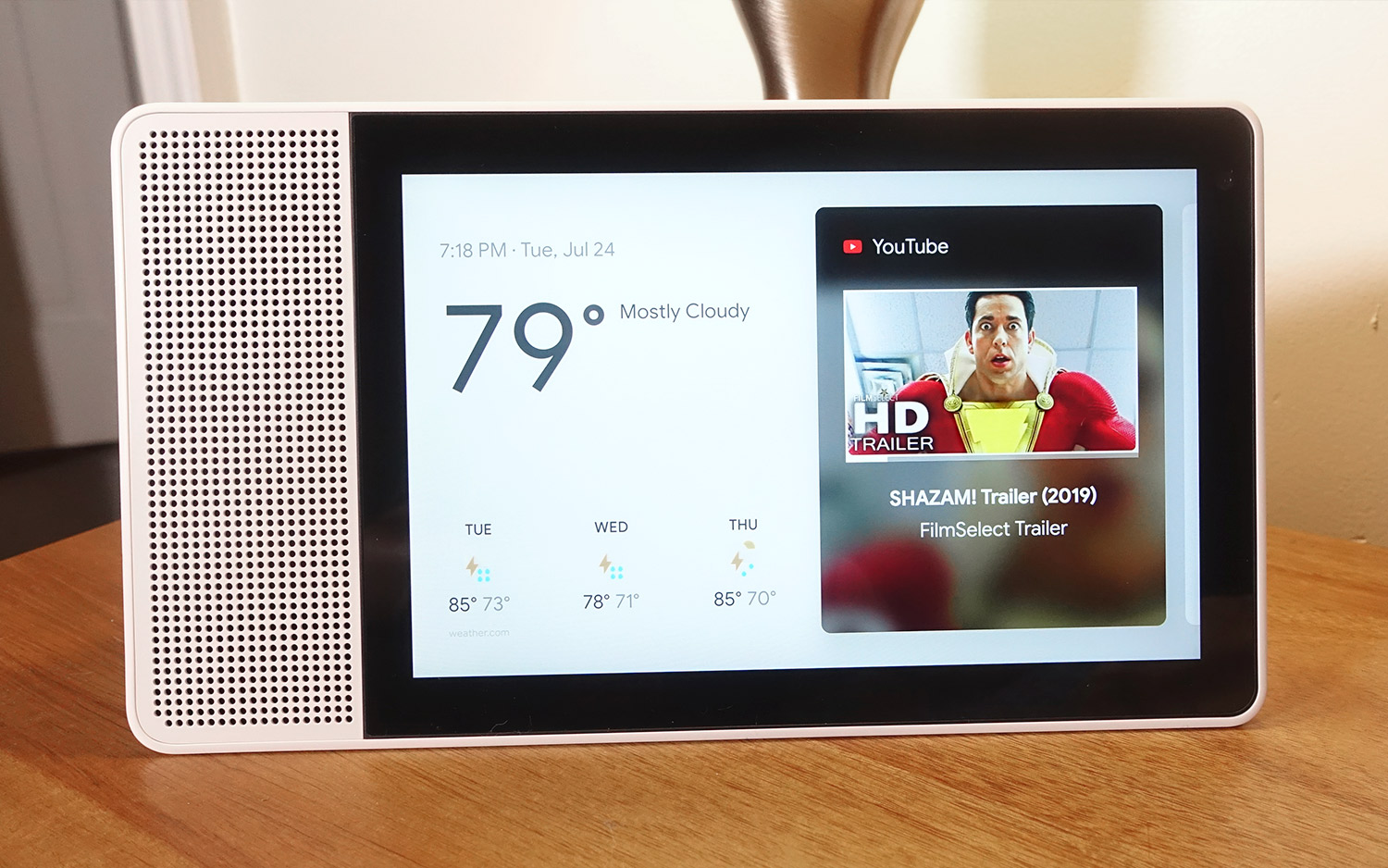
In photos and videos, colors were brighter, and there was much greater contrast than on the Show. I could actually see myself watching an entire 30-minute episode or movie on the Smart Display, whereas the Show's screen is just a bit too small.
Oh, yes — the Smart Display can play YouTube videos. Try doing that on the Echo Show.
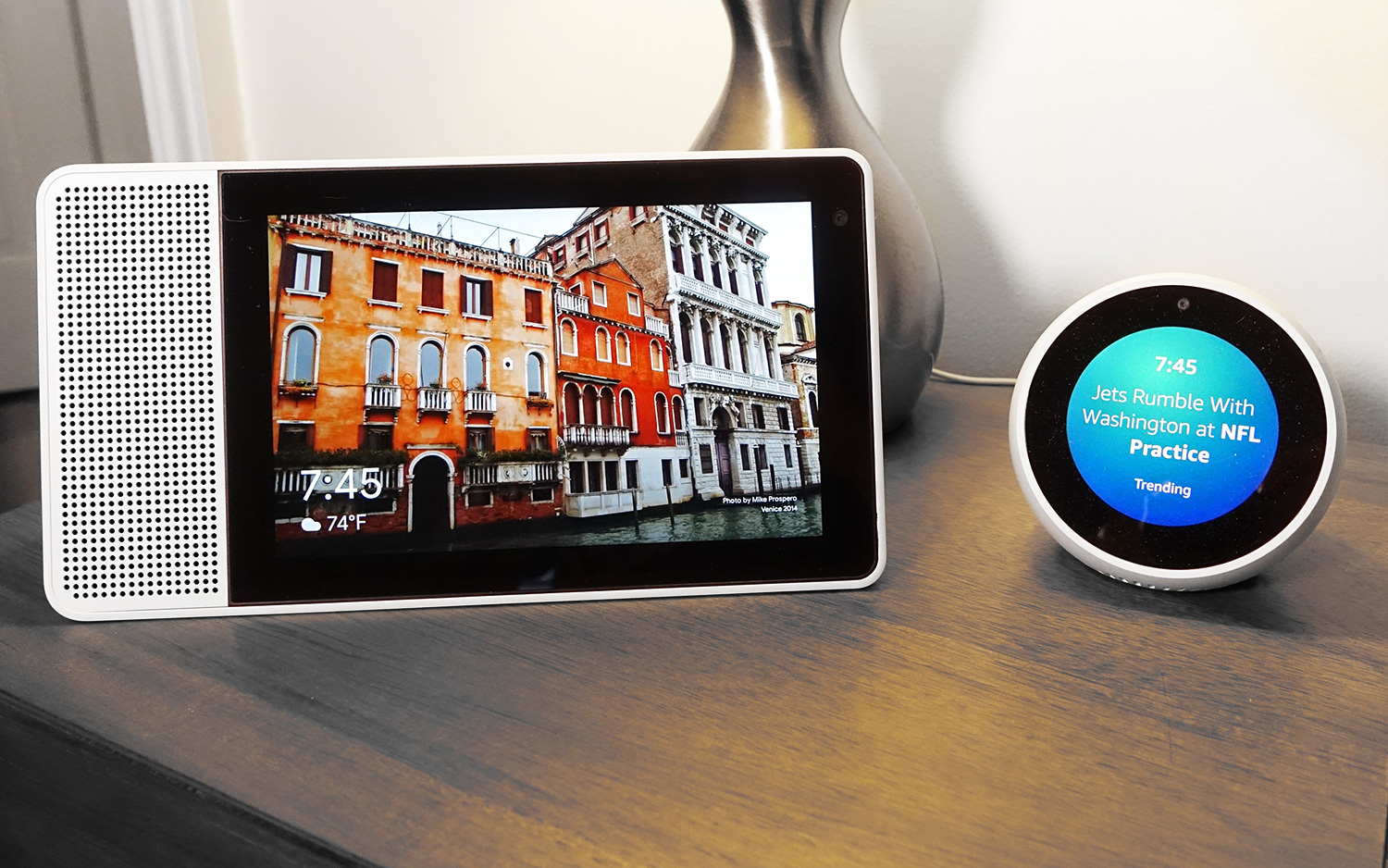
Although it's closer in size to the Echo Show, the 8-inch Smart Display's 1280 x 800 touch screen is more attractive than Amazon's device, and also delivers a sharper image.
Oh, yes — the Smart Display can play YouTube videos. Try doing that on the Echo Show.
Alexa vs. Google Assistant
We've compared Amazon's and Google's (and Apple's) voice assistants several times over the past few years and found that Google's is slightly ahead of Alexa. But the two are fairly close. Among other categories, the two are evenly matched for music, entertainment, ordering food and shopping online.
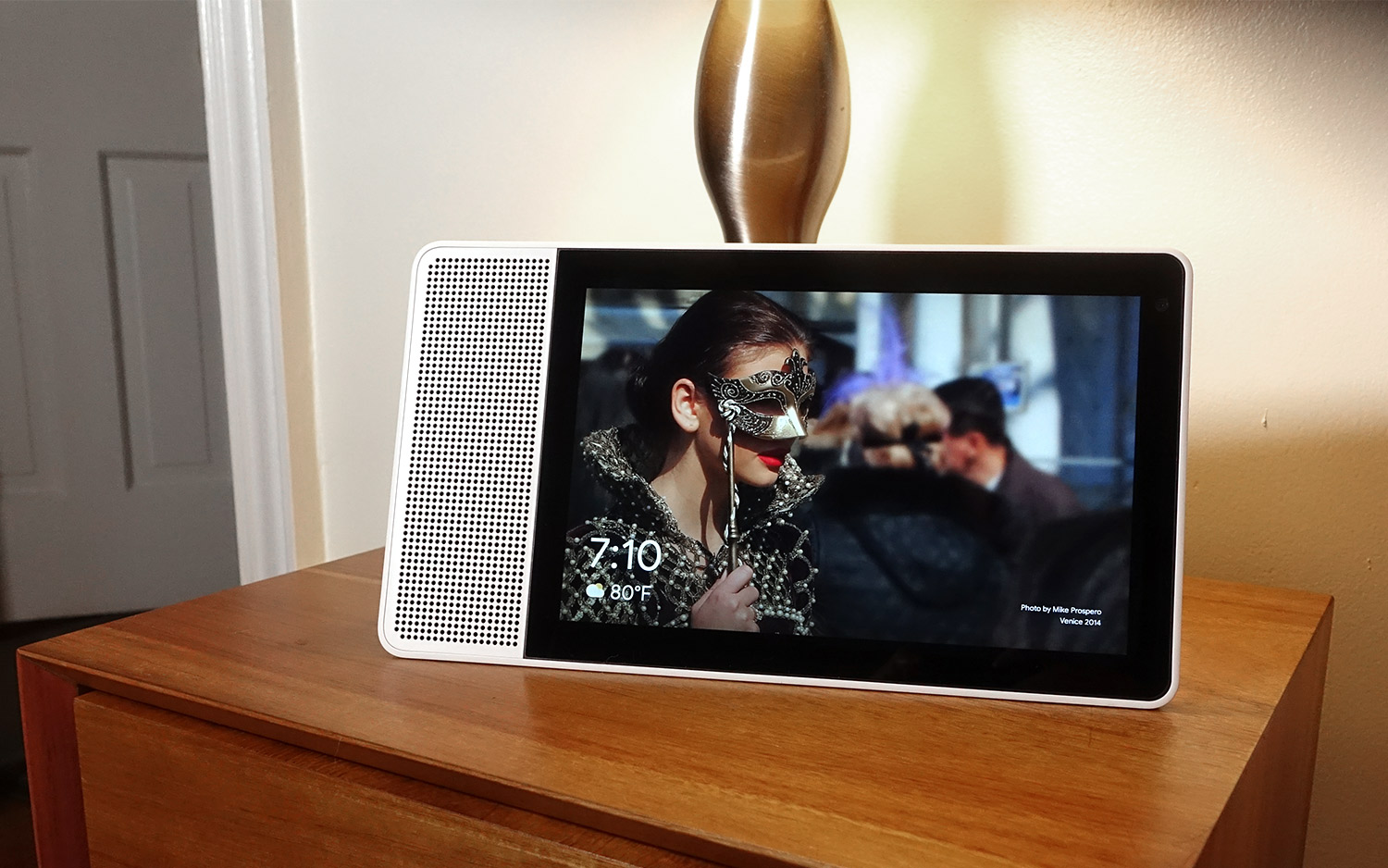
Google is better with directions, and this function is even easier on the Smart Display; you can look up an address by voice on the Smart Display and then have Google send the information to your phone. However, Alexa is better with general knowledge, as it provided more context than Google did in our 20-question showdown.
MORE: How to Pick a New Voice in Google Assistant
Cooking with Google Assistant
In the kitchen, Google Assistant makes for a better sous-chef than Alexa. To test their culinary skills, I asked both the Smart Display and the Echo Show to find me a recipe for pesto.
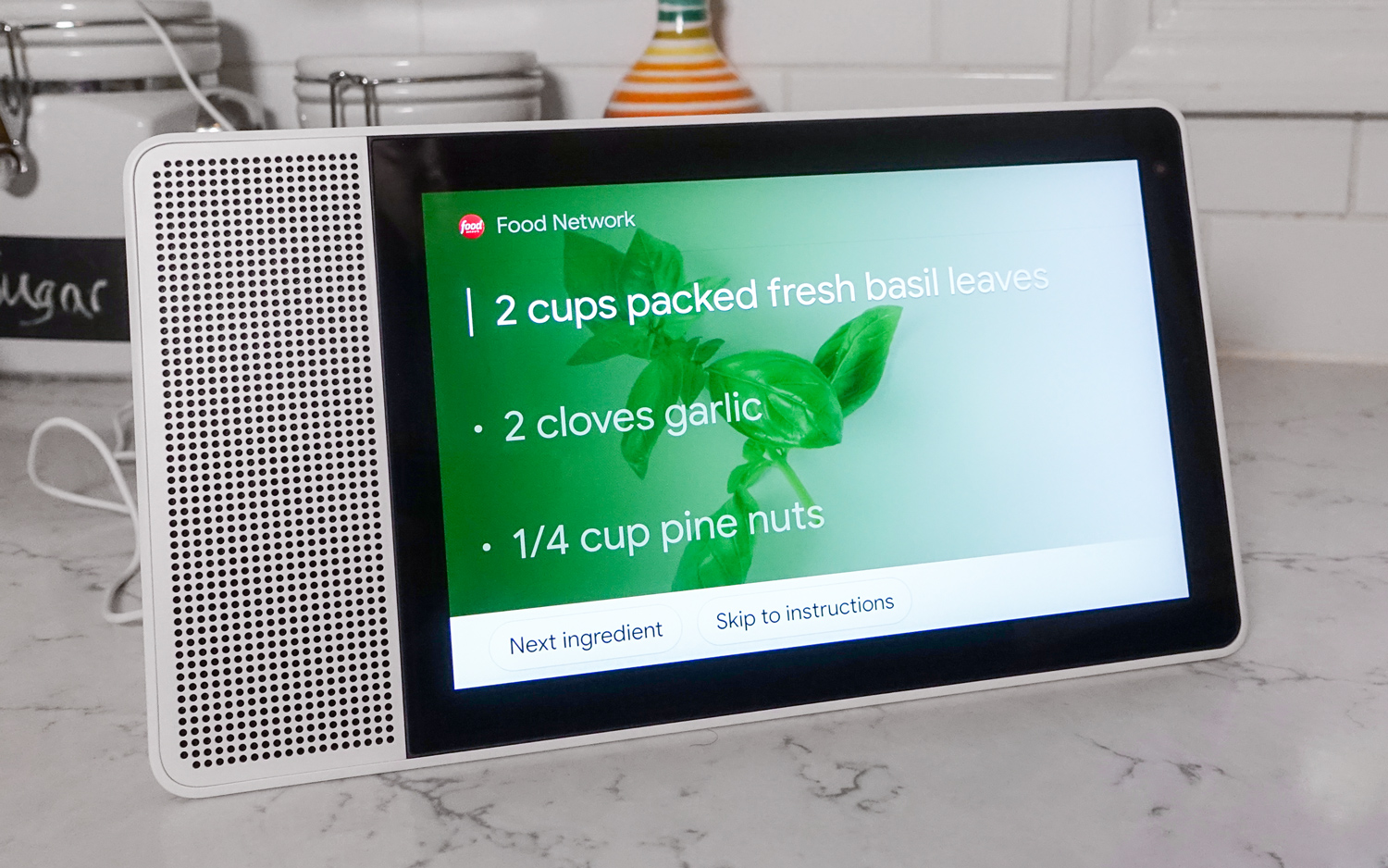
On the Smart Display, Google Assistant showed me several recipes. After I selected one, the assistant offered to read me each ingredient and then each step of the instructions. At all times, I had the option to go back a step or advance and could do so either verbally or by pressing a button on the display.
MORE: Best Kitchen Tech - Smart Appliances and Gadgets for Cooks
You would think that after a year, Alexa's video skills would have improved, but following a recipe on the Show was much more difficult than doing so on the Lenovo Smart Display. After I asked Alexa for a pesto recipe, the assistant presented several options on screen. I had to manually pick one, then ask Alexa to read me the ingredients, which it did, but it didn't give me the option to pause or go back. When I asked for the directions, it said, "Here’s information about pesto," and showed the instructions on screen.
Smart home control: Ring is off limits
Google Home works with a pretty wide range of smart home systems, from Abode to Ecobee, Lutron, Logitech and more. However, there are limitations, mainly when it comes to Amazon devices. For example, while you can ask Google to show you the stream from Nest Cam (as well as other security cameras), it doesn't work with Ring cameras or doorbells. Ironically, you can view a feed from the Nest Cam on the Echo Show.
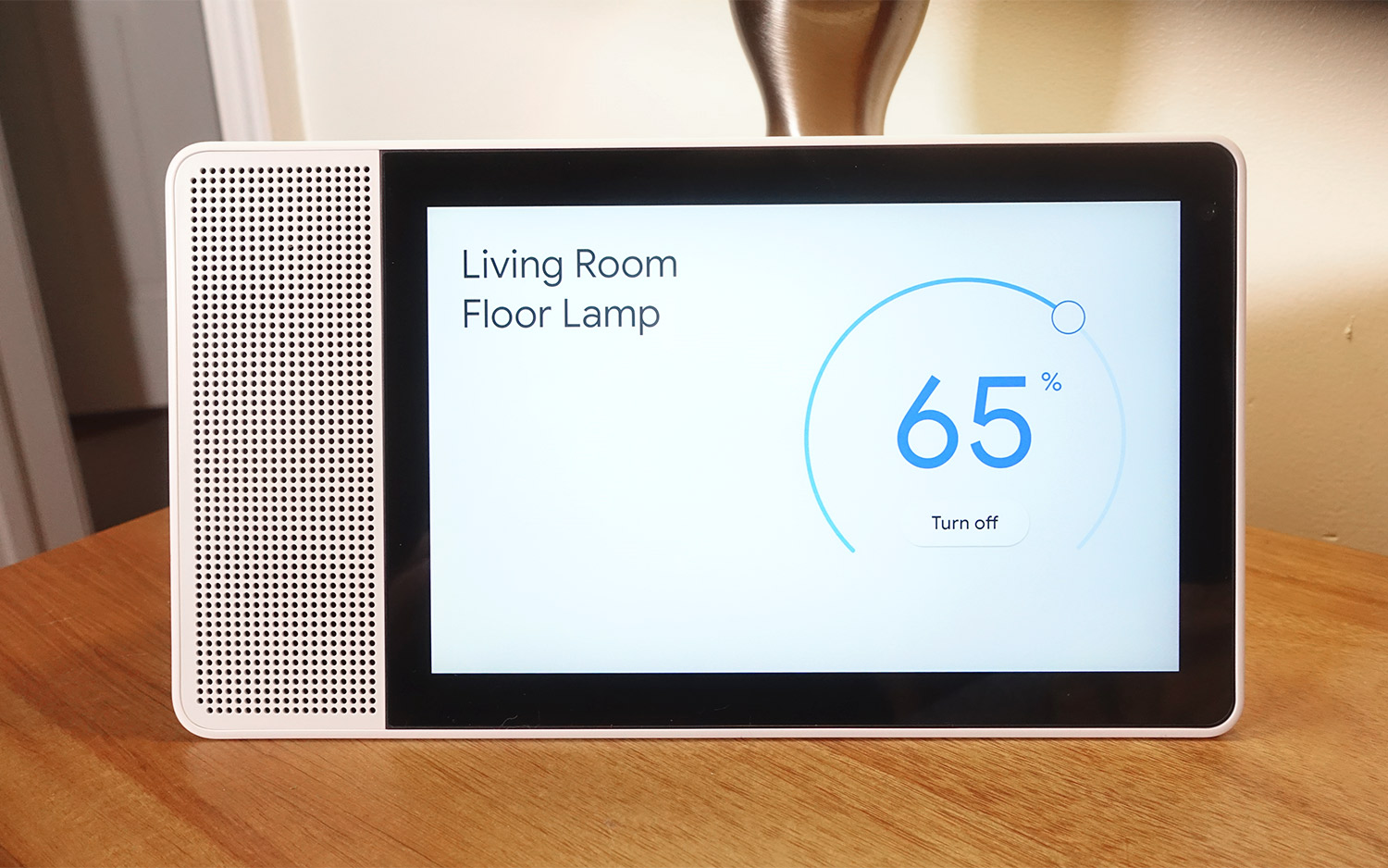
While you can ask Google to show you the stream from Nest Cam (as well as other security cameras), this feature doesn't work with Ring cameras or doorbells.
Video Calls
Worried about your privacy? Like the Echo Show, the Lenovo Smart Display has a button to mute the device's microphone, but as an extra precaution, there's also a physical shutter that blocks the Lenovo's camera.
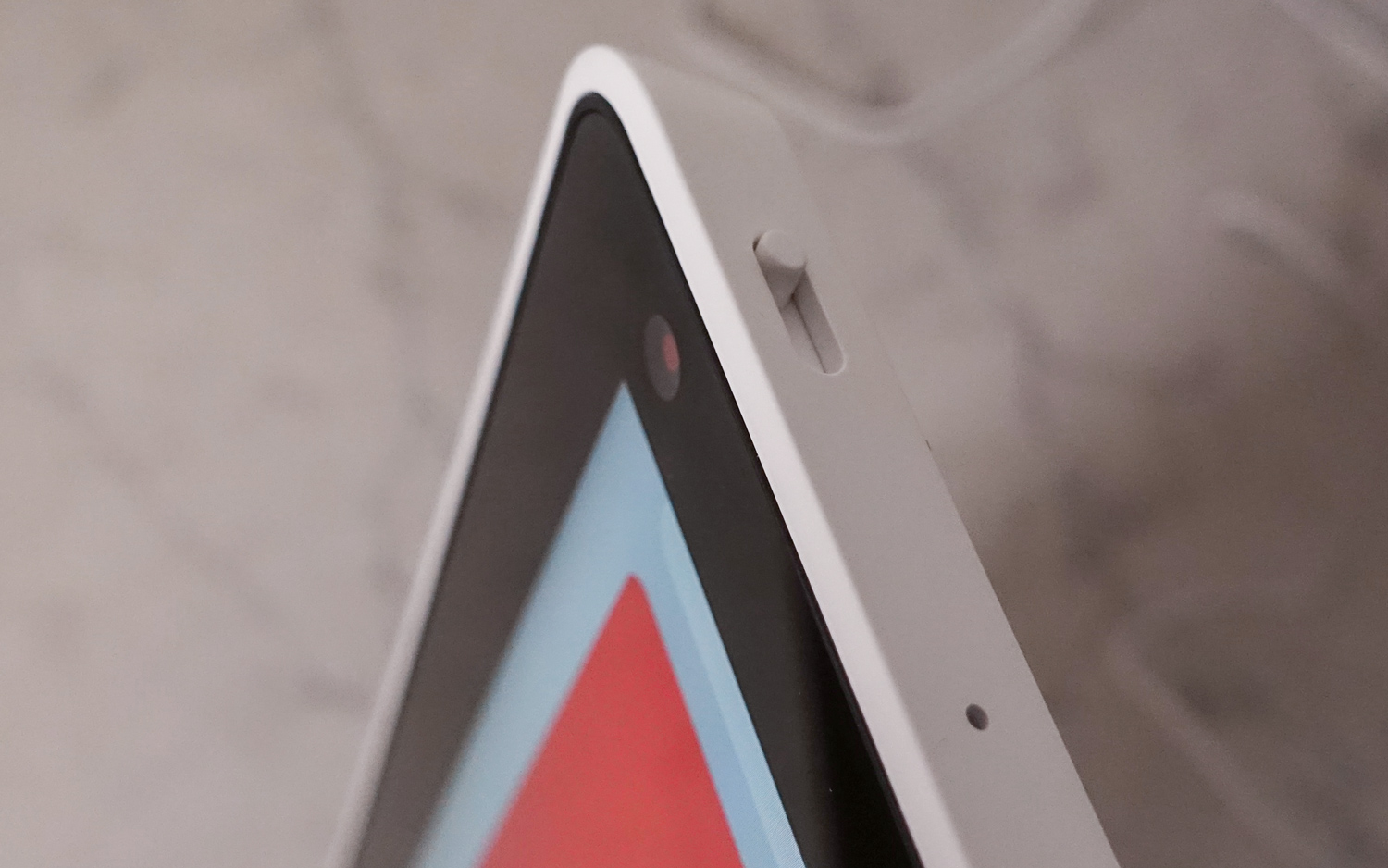
To make a voice or video call, you need to first enable Google Duo in the Google Home app (Menu > More Settings > Voice and Video Calls >Google Duo) by entering your phone number.
Then, the person you intend to call needs to download and install the Google Duo app (available for Android and iOS) on their smartphone or tablet.
MORE: How to Make a Voice or Video Call Using Amazon Alexa
Calling someone from the Smart Display was as simple as saying, "Video call to…" and the name of the person, but that individual has to already be in your Google Contacts list. The Smart Display initially had trouble with my wife's name, interpreting "Beth" as "Best," but after a few tries, I got Google to understand what I was saying.
On both ends, the quality of the video chat was good. Both video and audio came through clearly, though this will depend on both your home Wi-Fi network and the network the other caller is using.
Bottom Line
Sometimes, it pays to be second. Lenovo and Google have created a device that surpasses Amazon's smart-screen speaker in a number of ways. For starters, the Smart Display looks much more attractive than the Echo Show. But it's what you can do with the screen that makes Lenovo's device much more valuable.
When you ask a question of Google Assistant, the content that shows up on the Smart Display's screen enhances the spoken answer much more than a similar response from Alexa on the Echo Show would do. As a result, using the screen on the Smart Display can be a more interactive experience than on the Echo Show. And it's something that Amazon better worry about.
Credit: Tom's Guide

Michael A. Prospero is the U.S. Editor-in-Chief for Tom’s Guide. He oversees all evergreen content and oversees the Homes, Smart Home, and Fitness/Wearables categories for the site. In his spare time, he also tests out the latest drones, electric scooters, and smart home gadgets, such as video doorbells. Before his tenure at Tom's Guide, he was the Reviews Editor for Laptop Magazine, a reporter at Fast Company, the Times of Trenton, and, many eons back, an intern at George magazine. He received his undergraduate degree from Boston College, where he worked on the campus newspaper The Heights, and then attended the Columbia University school of Journalism. When he’s not testing out the latest running watch, electric scooter, or skiing or training for a marathon, he’s probably using the latest sous vide machine, smoker, or pizza oven, to the delight — or chagrin — of his family.
-
dqkevin2012 Please provide a review of the Amazon Show Mode Dock, which basically turns your Fire HD 8 or 10 into an Echo Show.Reply -
Alex Jenkins I can't find ANY information about Google's new products that were supposed to come out end of July. Were they doing a new design on their Home items as well? Weren't there other screen devices like this one you just showcased?Reply -
selden Re accessibility to Youtube videos, I would be gobsmacked if it will be possible to buy one of these on Amazon.com, which is blocking sales of any Google device that competes with their products.Reply -
hansjames Costco support said they sold out in minutes. I told them their buyer should be talked to for not doing their job.Reply -
hansjames I want this sooooo bad. Why you ask? Because it is not available as reported. jajajaReply -
jdroberts.ha The two companies keep leapfrogging each other when it comes to features, which is good for consumers since they usually add the features to device is already deployed.Reply
One echo show advantage that you missed in the review is that the Google device can't (yet) do drop-in video, making the echo much better as a baby monitor.
